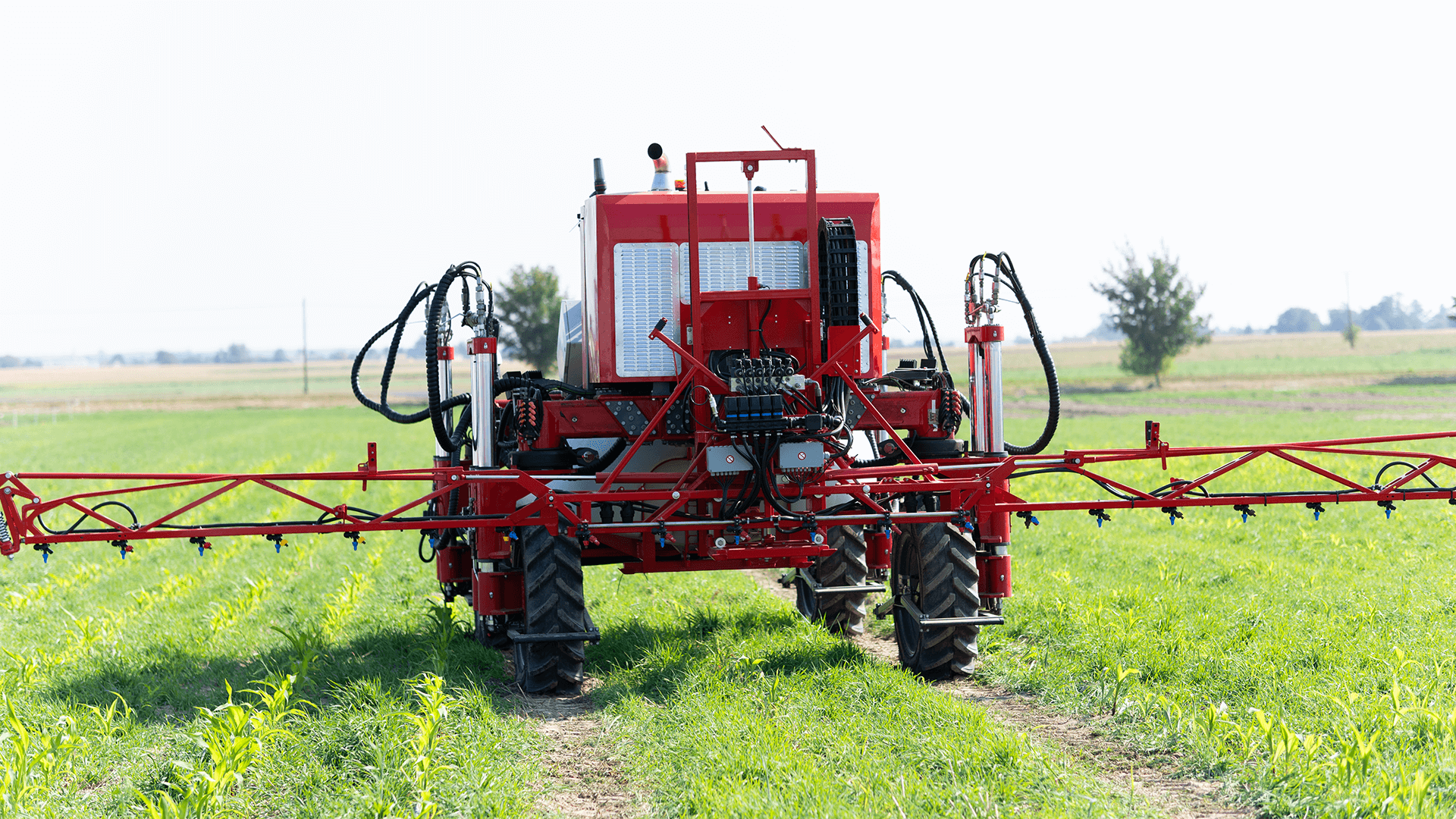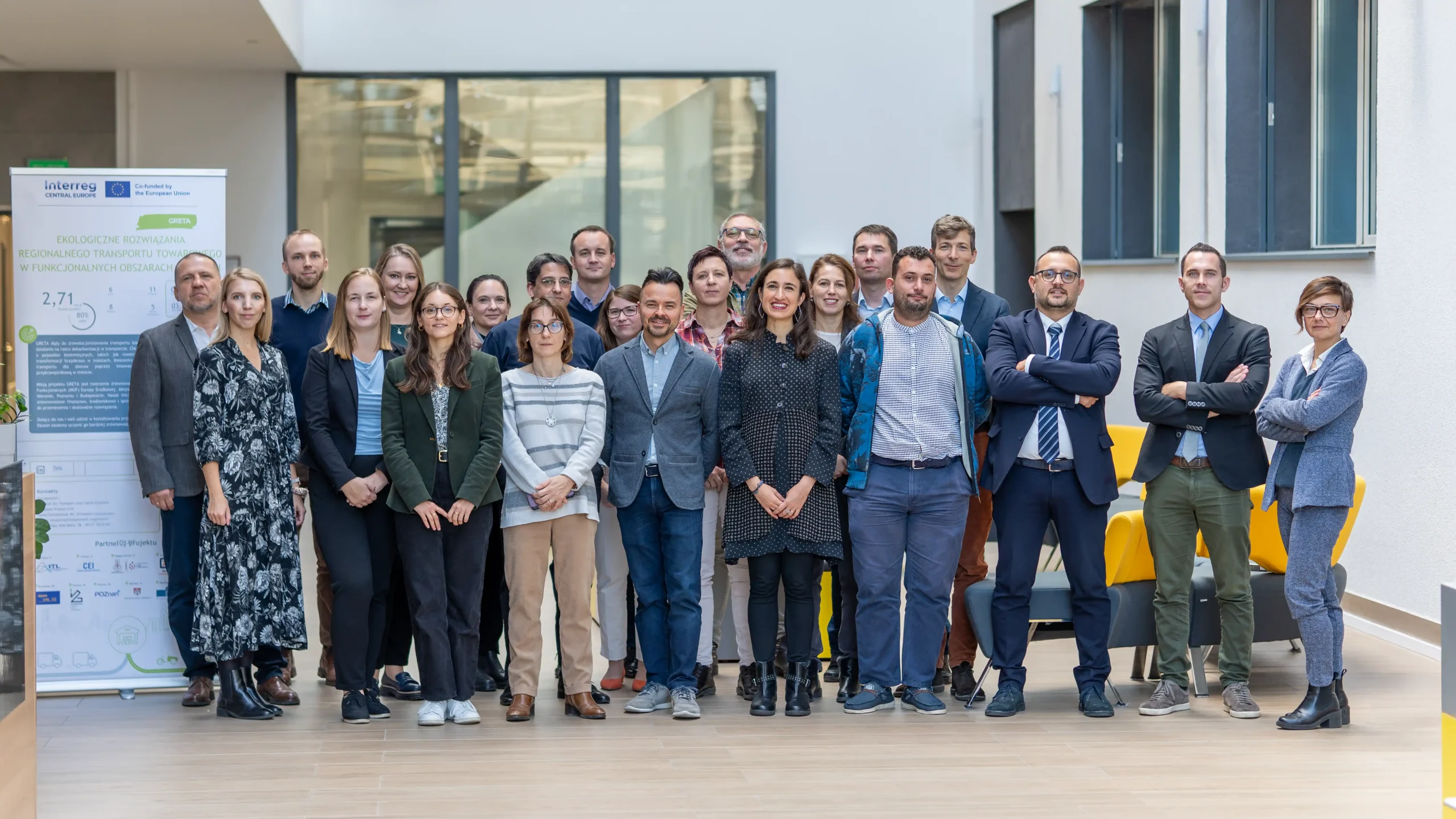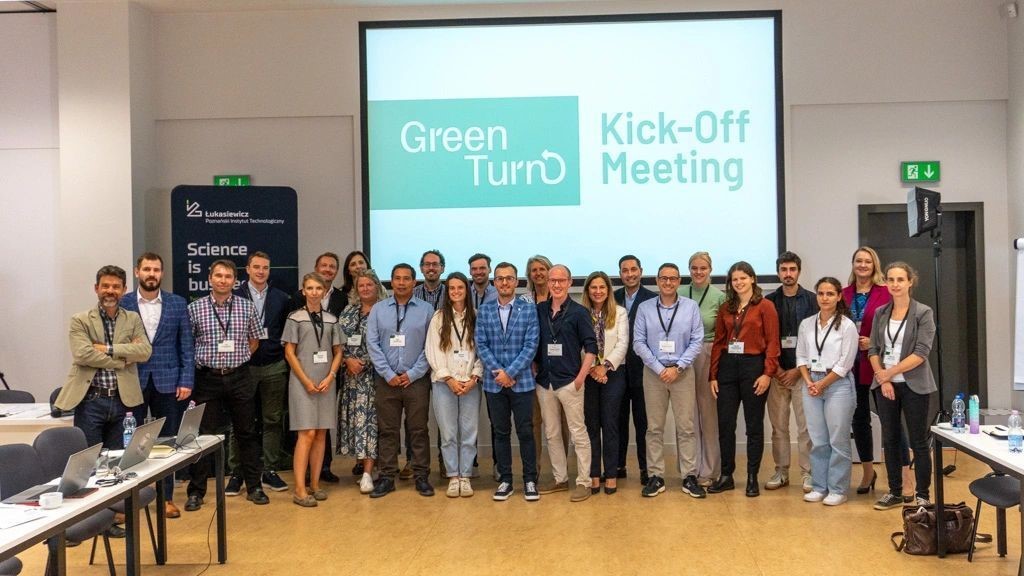Autonomous robot enters the fields

It uses the latest technology and artificial intelligence. It sows, weeds, sprays and doses crop protection products and fertilizers by itself. It recognizes plants and creates a yield map. The Polish robot, a specialist in corn cultivation, will soon be on the market.
The Polish Robot is a comprehensive corn cultivation tool. It consists of three working modules: a precision seeder, a sprayer and a mechanical weeder combined with a selective applicator of fertilizers and crop protection products. It was created by a consortium composed of two institutes of the Łukasiewicz Research Network – Poznań Institute of Technology and Aviation Institute, and the Unia company.
What does the robot do?
Before the robot starts working in the field, this field needs to be carefully measured so that the robot knows its working area and what limits it cannot cross. A work plan is uploaded to its computer and the robot is driven to the field. It is not small – it is 4.5 meters long, 2.8 meters wide and 3 meters high.
The first thing the robot does in the field is sow corn. Its spot seeder is controlled by a computer working with Isobus standard. This allows the seeds to be sown with a very high degree of accuracy and ensures that they have all been used.
Once the corn has germinated, the robot takes care of its safe and undisturbed growth. First of all, it weeds, both in and between the rows. To identify what is a weed and what is corn, it uses cameras and learned artificial intelligence algorithms. It can also assess the degree of weed infestation. In addition to weeding, it selectively applies fertilizers and crop protection products. As it works, it creates a map of the soil’s fertilizer needs and mineral abundance, so it can tailor the fertilizer dose to the specific crop. The treatment of the application of the plant protection products can be combined with mechanical weeding.
When the corn reaches a height of 50-60 cm, it is no longer weeded mechanically. Then the robot uses its sprayer module. It changes the track width, increases the height and, with an additional sprayer boom, can spray 15 rows of corn simultaneously.
Advanced technologies
The Polish robot would not be so effective if it did not collect and process data at all times. It is equipped with a network of sensors – a variety of cameras and multispectral sensors – which provide it with information on, among other things, soil abundance and moisture, plant condition, their fertilizer needs, environmental data (such as ambient temperature and humidity).
It also recognizes obstacles. When, for example, an animal or human appears in the field, it issues a light and sound signal. When that doesn’t work – it stops and sends information to its operator.
When will it enter the field?
This is the first such device on the Polish market. Work on it took more than three years. The Polish robot can be used on both large and small farms. Also ecological, because the robot allows to reduce the doses of fertilizers and plant protection products.
– The Polish Robot is a response to the problem of a lack of hands to work in agriculture, and secondly, to the need to switch to more ecological forms of agricultural production, explains Dr. Jacek Wojciechowski from Łukasiewicz – PIT, who manages the construction team of the Polish Robot. – Farmers will increasingly need efficient tools that simultaneously reduce human labor, costs and, above all, the adverse impact on the environment. And that is what our robot is like,” he adds.




